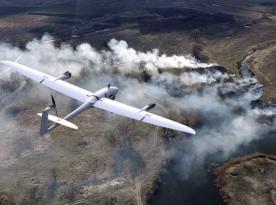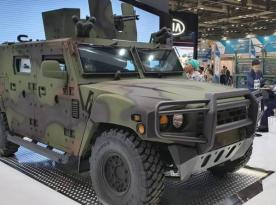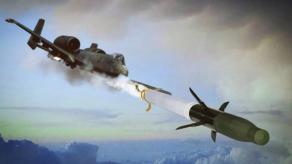Ukraine has developed a new type of precision-guided missile, and the first public "test" of its effectiveness was a success: an S-400 launcher was destroyed in the occupied Crimea, on the Tarkhankut Cape, which we reported on August 23rd.
The following video was taken by a drone recording the aftermath of the strike. How it managed to approach a valuable air defense system is another question but importantly, the target was heavily hit, with pre-loaded missiles cooking off and very likely damaging other vehicles of the S-400 system.
Read more: The Appearance of the Harpoon Anti-Ship Missile Launchers of the Ukrainian Navy is Still a Secret Even in Official Videos
The weapon behind this strike remained undisclosed while undoubtedly becoming a hot talk among the military media. Today, Head of the National Security and Defense Council of Ukraine Oleksii Danilov shed some light on this matter.
"The missile was a new one. The missile was absolutely modern. <...> In 2020, the NSDC approved a decision on weapon [manufacturing] processes, not all of them were open, so the public could be unaware of certain things. So yes, it is a new product which proved itself flawlessly," Danilov said in an interview to Radio Ukraine International.
There are already suggestions it could be a Neptun anti-ship cruise missile, earlier deployed to damage the russian frigate Admiral Essen and completely destroy the Moskva cruiser. The idea was that Neptun could be adjusted to enable using it against land targets, the same way it was implemented in the Harpoon Block II. Especially since such an option was considered from the very start of Neptun's development.
The russians suggest it was a Brimstone 2 ground-launched missile installed on a motorboat. The hypothesis was prompted by a landing operation in Crimea carried out by Ukrainian Defense Intelligence soldiers on boats the next day. However, this assumption is no longer valid after Danilov's revelation.
The footage of the strike can provide us with some insights into the capabilities of the missile. More specifically, into the guidance system it uses. Considering that the strike was supported by a drone, our suggestion is that the UAV could designate the target for the missile to strike.

At the same time, the crosshair of the drone's optical system was directed at the central vehicle of the group, most likely the radar of the S-400 system. In other words, it was not a laser designation. Also, considering that a launcher, not the radar, was hit we can rule out the anti-radiation homing head.
Thus only the thermal and radar homing heads remain. Given the Ukrainian arms tradition, the latter is a more likely option. In that regard, the S-400 has quite a characteristic radar signature.
On that note, we should not forget that some of the Ukrainian developments also showed high precision even when only inertial and satellite guidance systems were used. For example, the Vilkha MLRS.
In the video of the S-400 destruction, there is a small initial explosion that can be noticed in the very beginning. The fire from it spreads onto two launchers, which points to quite a potent high-explosive fragmentation warhead.
That detail, in turn, suggests the missile itself must be sizeable and so have an efficient operational range. In this particular case, it should have a range of at least 130 km to the frontline + 10 to 20 km on top for launcher safety reasons, or 180 km if we count from a launch site near Odesa.
This way we have a weapon of estimated range twice as far as American GMLRS used by HIMARS rocket systems in the Ukrainian Army, with a proper level of precision. Such a weapon can open many interesting opportunities for long strikes deep into the russian rear. And not only on the occupied Ukrainian territory, since all the foreign long-range weapons provided by Ukraine's partners are diplomatically bound to be never used against the russian territories.
Read more: Ukraine and russia Fight for the Strategically Important Gas and Oil Platforms in the Black Sea














